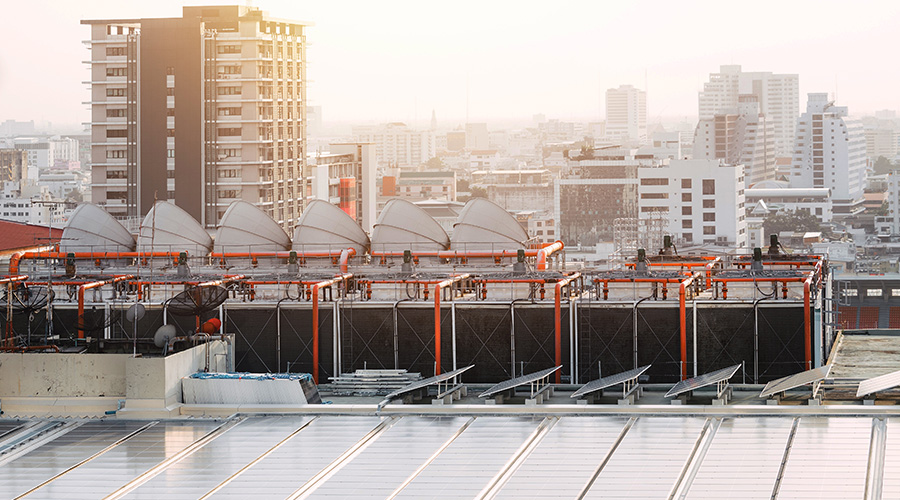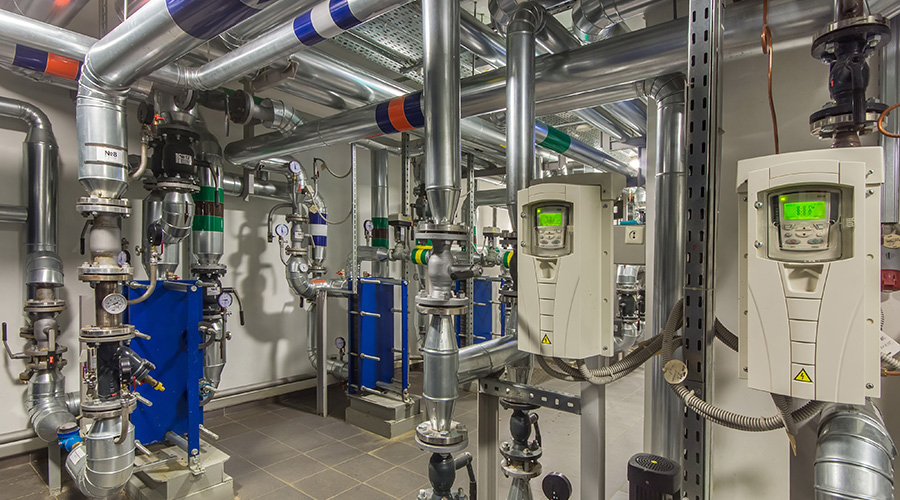Chillers: Retrocommissioning Restores Design Characteristics
Chillers are major energy users in institutional and commercial facilities, so it is understandable maintenance and engineering managers look for ways to improve their efficiency. While replacing a chiller often improves energy efficiency and reliability, the process can be disruptive and expensive. An alternative to replacement is retrocommissioning, which involves applying the commissioning process for new equipment to an existing chiller.
Departments that undertake retrocommissioning recognize that chillers and related systems lose efficiency over time, and that a comprehensive examination of chiller operations can restore much of the lost performance. When executed properly, retrocommissioning can return an existing chiller to its intended design characteristics.
Retrocommissioning offers managers a lower-cost, less-disruptive alternative, while providing many of the benefits of a new chiller. Managers who have retrocommissioned a chiller find the equipment's operating efficiency improves enough to recover the costs of the process in one-two years. To further make the case, retrocommissioning typically costs 75 percent less than replacement.
Candidates for Retrocommissioning
Managers can consider retrocommissioning chillers in various conditions, but a number of factors will determine the most appropriate candidates. For example, the age of the existing chiller is a major factor. Most chillers have a rated service life of 20-25 years. Other factors being equal, if a chiller has not passed the midpoint of its rated service life, managers should consider retrocommissioning instead of replacement.
Even chillers at 75 percent of their rated service life can be suitable candidates for retrocommissioning, as long as technicians have maintained them reasonably well and the units are in decent operating conditions. Once chillers have passed this point, retrocommissioning still can succeed, but managers will have to pay attention to such factors as the availability of replacement parts, manufacturer support, and the chiller's design efficiency.
Managers also must consider a chiller's overall condition when evaluating retrocommissioning candidates. The process can identify and correct a range of deficiencies, but it can reach a point of diminishing returns — namely, when the cost of restoring the chiller to its like-new condition approaches the replacement cost.
Finally, managers must consider whether the chiller suits the application. Does its capacity match the application load, or is it undersized or oversized? Retrocommissioning can match oversized chillers to loads without sacrificing operating efficiency by using variable-frequency drives and other operating techniques, but they will do little to correct undersized chillers. The best candidate is a chiller operating reliably but with problems managers know of but lack the time or funding to repair. Retrocommissioning will be the most cost-effective approach and provide the greatest improvement in performance in these applications.
Related Topics:













